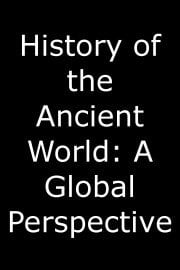In Season 1, Episode 31 of *History of the Ancient World: A Global Perspective*, titled Han and Roman Empires Compared: Geography, viewers are invited to embark on a captivating exploration of the geographical influences that shaped two of the most formidable empires in human history—China's Han Dynasty and Rome's expansive realm.
As the episode unfolds, the audience is introduced to the significance of geography as a driving force behind the development, expansion, and sustainability of both empires. The episode underscores how environmental factors, such as arable land, climate, and natural barriers, dictated not only the agricultural practices that formed the backbone of these economies but also influenced political boundaries and military strategies.
Through an analytical lens, the episode juxtaposes the vast landscapes of the Han Empire, with its diverse topography ranging from mountainous terrains in the north to the fertile plains along the Yangtze and Yellow Rivers, against the Mediterranean region that defined the Roman Empire. The series delves into how these geographical features affected trade routes, resource distribution, and interactions with neighboring cultures.
The Han Empire, known for its innovation and technological advancements, was heavily reliant on its river systems, which facilitated not only agriculture but also transportation and trade. The viewers witness how the Yellow River, referred to as the “cradle of Chinese civilization,” became a focal point for the rise of the Han and shaped cultural practices. This episode brings to life the relationship between land and people, illustrating how ancient Chinese society adapted to and thrived in its environment.
Conversely, the episode navigates the geographical marvels of the Roman Empire, where the Mediterranean Sea served as a conduit for commerce and communication, linking the empire across vast distances. The program highlights the importance of the Roman road network, which was instrumental in connecting disparate regions, promoting trade, and enabling military movements. The natural resources harvested from provinces, alongside the diversity of climates spanning from the British Isles to North Africa, painted a complex portrait of Roman adaptability and resilience.
Throughout the episode, key historical figures and events are examined, showcasing how geography influenced military conquests, diplomatic relations, and internal governance. Audiences will learn about pivotal battles that were fought with geography in play, such as the strategic advantages of mountain passes or river crossings, and how terrain often dictated the flow of history.
Visual aids, maps, and animations enhance the storytelling, providing a clearer understanding of the physical expanse of both empires. These graphics serve not only as educational tools but also as engaging elements that immerse the viewer in the ancient worlds being depicted. The episode invites reflections on how geography can determine the fates of civilizations, effectively prompting a broader understanding of the interplay between environment and society.
As the episode progresses, it touches upon the cultural implications of geography as well, examining how landscape not only shaped the economy but also influenced belief systems, social structures, and artistic expressions. Viewers may find themselves pondering how the shared experience of living within their geographical contexts fostered distinct identities and ideologies in both empires, despite their vastly different cultural heritages.
In an effort to foster a global perspective, the episode also contextualizes the narratives of the Han and Roman Empires within the larger tapestry of human civilization. By comparing and contrasting these great powers, the episode encourages viewers to draw connections between different cultures and recognize the universality of geographic influence.
Overall, Han and Roman Empires Compared: Geography stands as a compelling episode that not only educates about the specific characteristics of these empires but also invites an introspection of how geography continuously shapes societies around the globe, even in the present day. The nuanced discussions and rich visual storytelling promise to leave audiences with a deeper appreciation for the interconnectedness of human history driven by the powerful current of our natural surroundings.
This episode is an essential viewing for history enthusiasts, educators, and anyone keen on understanding how the physical world has influenced the development of civilizations throughout time. As it concludes, viewers will emerge with newfound insights into the fundamental role that geography played in the epic narratives of the Han and Roman Empires, setting the stage for further explorations into the complexities of ancient world history.
-
Genres
-
Channel
-
First AiredDecember 16, 2011
-
Content RatingTV-PG
-
Runtime29 min
-
LanguageEnglish

